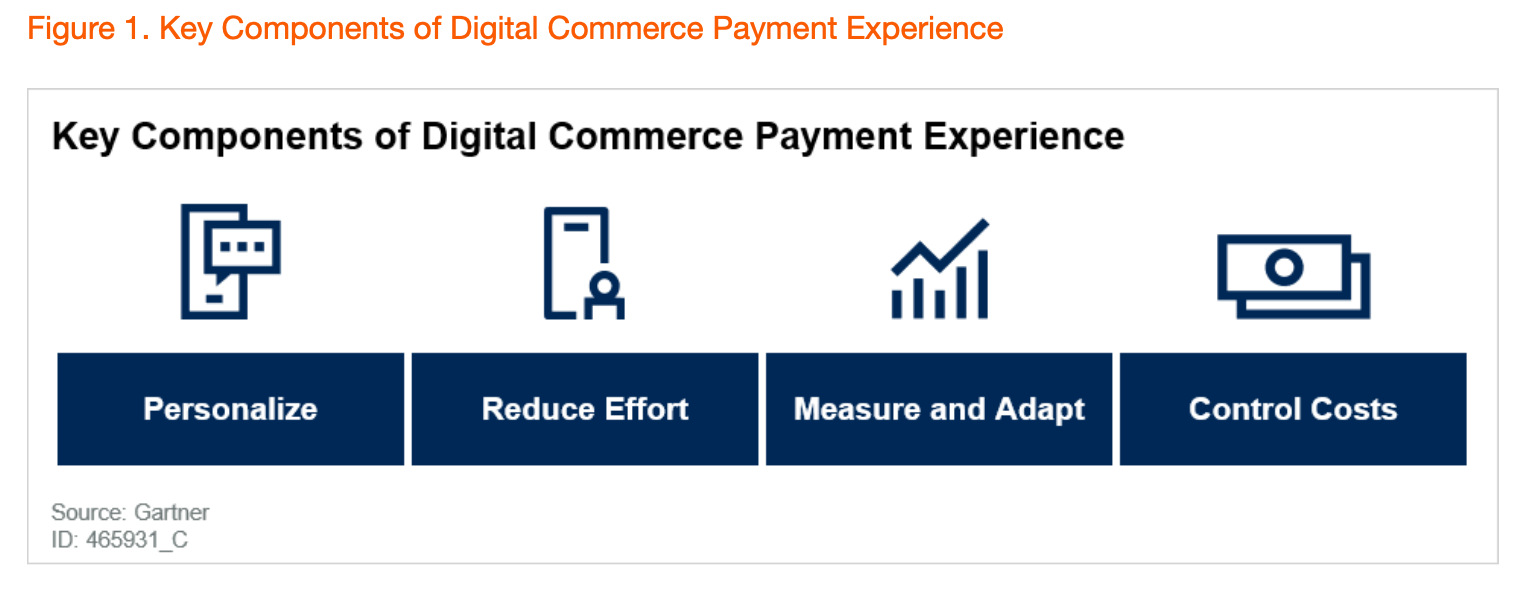Personalizing Your eCommerce Payments Process Is Key
By personalizing your customers’ ecommerce payments experience and rethinking key elements of the checkout process, you can optimize sales conversion rates and create a friendlier and easier-to-use experience for your shoppers.
One Size Does Not Fit All Customer Experiences
eCommerce continues to explode in growth around the world. Yet many online merchants and retailers still rely on outdated, one-size-fits-all customer experiences on their websites, especially during the payment process. Inadequate customer experiences can make your website feel behind the times for shoppers, lower sales conversion rates and leave money on the table.

Personalization Leads To Optimization
Personalizing your ecommerce customer experience is fundamental to decreasing shopping cart abandonment while increasing your website’s overall sales conversion rate. A Gartner review of more than 125 case studies found that when used at the right touchpoints, personalization boosts engagement, decreases cart abandonment, and increases revenue (up to 28%) and conversion (up to 71%).1
Personalizing Payments Creates a Better Overall Customer Experience
Improving the ecommerce payment experience is an essential step businesses need to take to begin increasing sales conversion rates. Streamlining the experience is a form of personalization customers value the most. This includes:
- Communicating in the local language
- Auto-populating billing and shipping fields
- Accepting stored payment methods
- Using adaptive web design for payment pages
Make the Payment Process Low-Effort
Simple, streamlined payment processes not only optimize conversion rates, they also increase customer satisfaction. However, most ecommerce user experiences continue to require text-heavy navigation, multiple steps to pay for a purchase. and customer registration to complete a purchase. This can lead to lost sales and decreased customer satisfaction, especially for mobile checkout processes. Creating a low-effort ecommerce payments process includes:
- Reducing the number of keystrokes required
- Optimizing field sizes and layout/format
- Including a final confirmation step
- Allowing customers to complete a purchase without registering
Measure & Adapt the Payment Experience
Leading ecommerce brands often use tools to capture payment process, financial, and operational metrics like shopping cart abandonment, conversion rate and merchandise value transacted to see where they can improve. But an underlooked place to measure important information is the customer experience, specifically around the payment process. Getting a better understanding of your customer experience can be achieved by:
- Sending a brief customer satisfaction survey to the customer post-transaction
- Analyzing behavioral metrics about your payment process
- Setting goals for customer experience metrics
- Adding payment experience metrics to your customer experience metrics dashboard
Improve the Customer Experience, Improve Your Bottom Line
A poorly designed customer experience leaves items in the cart and revenue on the table. By personalizing ecommerce payments, creating a frictionless process and measuring, you can enhance your customer payment experience and optimize sales conversion rates.
Sources:
1. Ford Dayna, Chiu Michael, How to Improve Customer Experiences in Digital Commerce Payments, Gartner, Jan 2020, Print
Subscribe Via Email
Thank You!
You’ve Been Subscribed.



